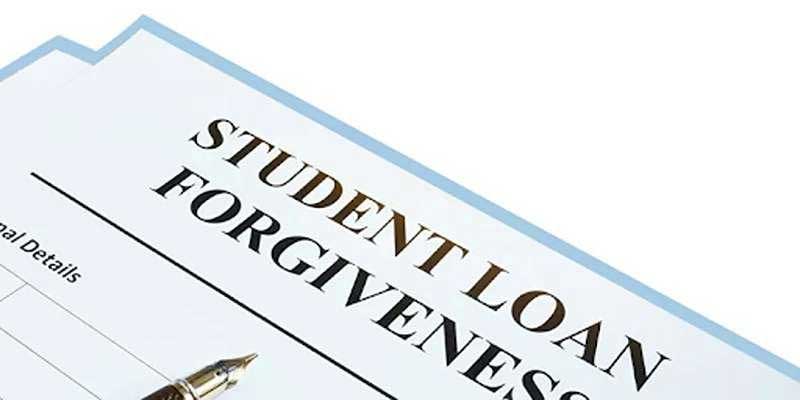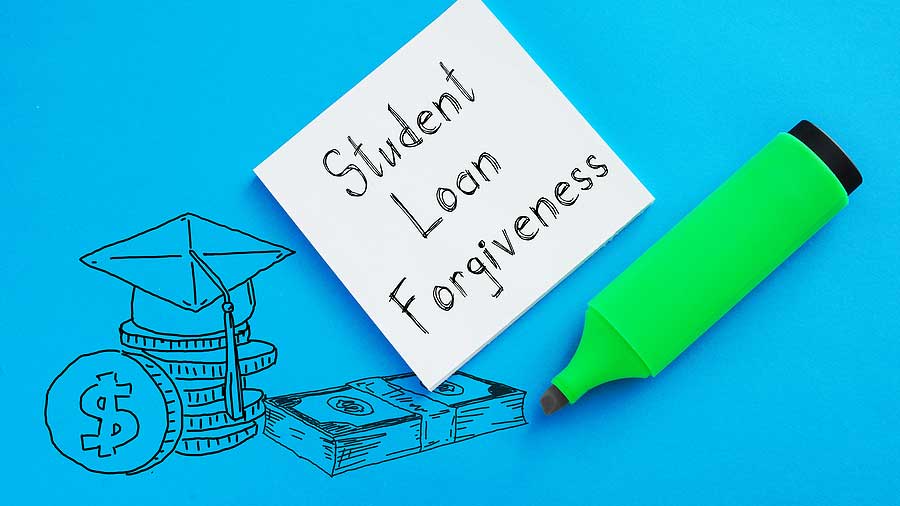What Is Student Loan Forgiveness?
Mar 26, 2023 By Kelly Walker
Are you feeling overwhelmed by your college debt? Student loan forgiveness is an increasingly popular topic among borrowers now more than ever, as college tuition costs continue to outpace wages. 
This blog post will explore what student loan forgiveness entails, who qualifies for it, and how to apply for it whether you're a recent graduate carrying high student debt or an experienced professional looking for new ways to reduce your loans faster.
This comprehensive guide on all things related to student loan forgiveness could help you save thousands of dollars. Let's dive in!
Introducing Student Loan Forgiveness and Who Qualifies:
Student loan forgiveness reduces or eliminates debt for people who meet certain criteria. This relief can come in full cancellation, partial cancellation, and even forbearance (pausing your payments with no interest accruing).
Generally speaking, borrowers must demonstrate financial hardship to qualify for student loan forgiveness. Additionally, some federal loan programs may have specific eligibility requirements based on employment or the type of loan you hold.
How Student Loan Forgiveness Works
Student loan forgiveness is when the federal government forgives some or all of a borrower's outstanding student debt. The amount forgiven varies depending on the program and eligibility criteria, but it can be up to 100% of an eligible borrower's student loan balance.
The most common type of student loan forgiveness is called Public Service Loan Forgiveness (PSLF). This program is designed to help borrowers who have worked in the public sector for ten years or more.
If you meet certain qualifications, the government will forgive whatever you still owe on your student loans after making 120 qualifying payments over a decade.
Types of Student Loan Forgiveness
Student loan forgiveness is not a one-size-fits-all solution, and several different types may be available to borrowers. These include:
1. Public Service Loan Forgiveness (PSLF) - This program is available to borrowers working full-time in certain public services fields, such as government, military, law enforcement, and public safety. To qualify for PSLF, borrowers must make 120 qualifying payments on their loans while working in the eligible field.
2. Income-Driven Repayment (IDR) Plans - These plans are designed to help borrowers with a large student loan balance but limited income repays their loans. Under an IDR plan, a borrower’s monthly payment is determined as a percentage of their discretionary income, and any remaining balance after 20 or 25 years may be forgiven.
3. Teacher Loan Forgiveness - This program provides loan forgiveness for borrowers who teach full-time in certain low-income school districts for at least five consecutive years. Eligible borrowers may receive up to $17,500 in loan forgiveness, depending on their subject area and type of loan.
4. Perkins Loan Cancellation - This program is available to certain types of public service professionals, including teachers, nurses, and military members. Borrowers in this program may have up to 100% of their Perkins loans forgiven after five years of qualifying payments.
5. Bankruptcy - The most extreme form of student loan forgiveness is bankruptcy, though it is rarely an option due to the stringent regulations surrounding it. To declare bankruptcy on your student loans, you must prove “undue hardship,” — meaning you must demonstrate that repaying your loans would cause undue financial difficulty.
Benefits of Student Loan Forgiveness:
1. One of the greatest benefits of student loan forgiveness is that it can help you save thousands of dollars in monthly payments and lower your total debt owed to federal lenders.
2. Student loan forgiveness prevents borrowers from defaulting, which may lead to negative credit ratings and potential legal action.
3. Some federal loan forgiveness programs may even provide a tax break that could reduce the taxes owed on forgiven student debt.
Eligibility Requirements for Student Loan Forgiveness:
1. Generally, to be eligible for student loan forgiveness, borrowers must first meet certain requirements set forth by their lenders, such as income limitations and loan repayment plans.
2. Furthermore, borrowers may need to make a certain number of payments on their student loans before they can qualify for forgiveness.
3. Other eligibility requirements may include working in a specific industry or serving in the military or other public service.
How to Apply for Student Loan Forgiveness?
Applying for student loan forgiveness can be a complex process. The first step is to find out if you’re eligible, which may depend on your job type, current income, and other factors.
Next, it’s important to research the different types of forgiveness programs available and determine which is right for your situation. For example, if you’re a teacher, you may be eligible for the Teacher Loan Forgiveness Program; if you have medical-related loans, then the Public Service Loan Forgiveness (PSLF) program might best suit you.
Regarding the application process, many loan forgiveness programs require you to fill out paperwork and submit supporting documents.
Depending on the program, this could include bank statements, tax returns, and employment verification forms. Additionally, it’s important to stay organized by keeping track of all your payments and any deadlines associated with the process.
Finally, once you have applied for loan forgiveness, keep up with all your payments until you hear back from the loan servicer. This is important because if you make a payment, your application could be completed on time.
Possible Challenges with Applying for Student Loan Forgiveness:
Applying for student loan forgiveness can be a complex and daunting process. Depending on the program, you may have to meet long-term repayment or job requirements or provide proof of income.
Additionally, borrowers must generally remain in good standing on their loans while applying—which means avoiding delinquency or defaulting on loans during this period.
To qualify for certain programs and understand the terms of your agreement, you should seek professional help from an accredited financial adviser or student loan lawyer.
Resources for Help With Applying for Student Loan Forgiveness:
Applying for student loan forgiveness can be daunting. That's why it’s important to have reliable resources to assist and guide the process. You may want to start by getting in touch with your loan servicer, or you could explore these options:
• StudentDebtRelief.us: This website offers free information and resources to help you navigate the student loan forgiveness process.
• American Student Assistance: ASA's website includes information on different types of loan forgiveness programs, helpful calculators, and other resources that can make navigating the application process easier.
• StudentLoans.gov: This government-run website provides helpful information on loan forgiveness, repayment options, etc.
• National Student Loan Data System: NSLDS is a centralized database with information on all loans taken out under the Federal Family Education Loan Program (FFELP) and the William D.
Ford Federal Direct Loan Program (FDLP). You can use this system to keep track of your loans and view your loan history.
FAQs
Who qualifies for student loan forgiveness?
Eligibility for student loan forgiveness depends on your loan type, current income, and other factors. Generally, federal loan holders may qualify for the federal Student Loan Forgiveness Program, while private loans are subject to specific programs offered by individual lenders.
How do I know if my student loans will be forgiven?
The best way to determine your eligibility for student loan forgiveness is to contact your loan servicer. They can provide the details and application requirements to apply for the program.
What happens when you have student loans?
When you take out a loan to pay for college, the money is deposited directly into your school account. You then become responsible for paying back the loan, plus interest.
Depending on your loan type and other factors, you may be eligible for student loan forgiveness after making a certain number of payments. You can reduce your interest rate or even get a lower monthly payment. Be sure to contact your loan servicer to explore all of your options.
Conclusion
Loan forgiveness is an incredibly valuable resource for borrowers struggling to pay off their student debt. It can save you thousands of dollars, reduce your monthly payments and get you out of debt faster. Be sure to familiarize yourself with the requirements for each program and the application process and timeline to make a successful application.
You can also explore other options, such as income-driven repayment plans or refinancing loans, to find the best solution for your financial situation. Good luck!










